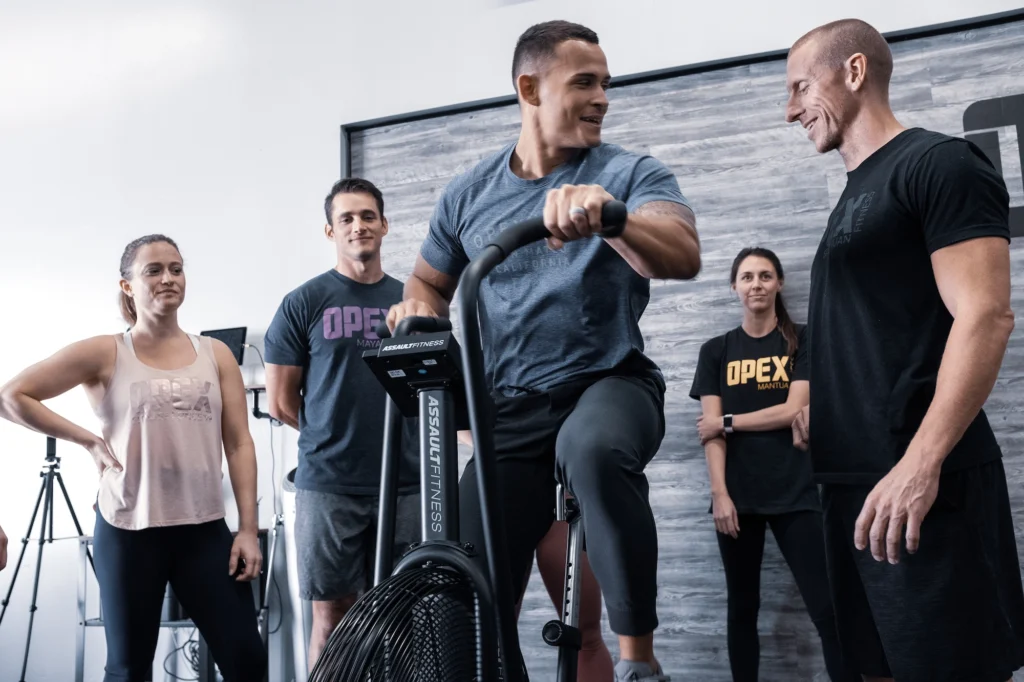Coaches Corner With Carl Hardwick: Implementing Individual Design in a Group Gym

Can I incorporate individual design coaching into my group fitness gym? Yes, but it’s important to consider the pros and cons of a hybrid model
In my previous article, we discussed the distinct advantages and potential challenges associated with both individual design and group coaching models. As a company deeply rooted in one-on-one coaching, at OPEX, we frequently get asked the question: “How can I incorporate an Individual Design service into my group-oriented gym?”
This is a complex one, given the varying motivations of different coaches, ranging from a complete transition to individual design to the implementation of a blended model. In this piece, we’ll explore the notion of creating a hybrid fitness model.
Essentially, a hybrid model is a model that has two distinct service offerings under one roof, ID and Group.
The crucial first step for coaches considering this approach is to identify their connection to each model and establish a strategy for marketing both aspects. Regrettably, some coaches have solely incorporated individual design as a means of financial gain, resorting to group coaching as a fallback option for clients reluctant to adopt the former. This strategy could prove to be a pitfall in the long run as it may not serve the best interests of the clients or meet them where they are, leading to a lack of results, engagement, alignment and, potentially, higher client turnover.

When contemplating the introduction of this hybrid model, the primary focus should be the coach/owner deciding what success means to them. What do they believe to be the highest order for delivering fitness? Is there a service offering they would like every member to eventually adopt? While individual design allows for deep coach-client relationships and tailored prescriptions, it may not be the perfect fit for everyone. Some clients may thrive in a group environment, at least for a certain period.
In our experience, clients who gravitate toward individual design often have previous fitness experiences that fell short of expectations, appreciate the benefits of personal coaching and are prepared to take their health and fitness journey seriously.
Pros of the Hybrid Model
- Greater Revenue: The hybrid model offers an opportunity to charge a premium for a high-touch service, thus enhancing revenue.
- Enhanced Client Success: A dedicated focus on individual goals increases the likelihood of clients achieving success.
- Reduced Churn: The hybrid model fosters client engagement and provides clear fitness pathways, reducing the likelihood of clients leaving.
- Deeper Relationships: Coaches can establish more meaningful relationships with clients, which can improve client satisfaction, boost retention rates and enhance coaches’ professional fulfillment.
- Options: This model provides an array of service offerings to cater to diverse client needs.
Cons of the Hybrid Model
- Divided Focus: Juggling two distinct service offerings can dilute a coach’s focus, innovation and attention.
- Potential Resentment: Balancing two models under one roof could lead to internal discord due to the natural hierarchy that might emerge.
- Lack of Fulfillment: It’s natural for coaches to resonate more with one model, leading to potential dissatisfaction with the less-preferred model.
- Market Confusion: The market may struggle to understand the gym’s offerings, making it challenging for the business to establish a distinct niche.
While integrating an individual design model within a group coaching context presents intriguing possibilities, it also requires thoughtful consideration and strategic planning.
The hybrid model’s potential for enhanced revenue, client success and deeper relationships is compelling, but challenges such as divided focus and market confusion cannot be overlooked. The key to successful implementation lies in ensuring that both ID and Group are genuinely serving the best interests of the clients and aligning with their unique fitness journey.
See Carl’s previous article here.
Next week’s column: How To Assess Your Clients
Carl Hardwick, CEO of OPEX Fitness & CoachRx, is a strong advocate for bringing honor to the coaching profession and raising the value of all fitness coaches. He lectures frequently about program design, business systems, and building a sustainable coaching career. Follow him on Instagram @hardwickcarl and OPEX Fitness on YouTube



